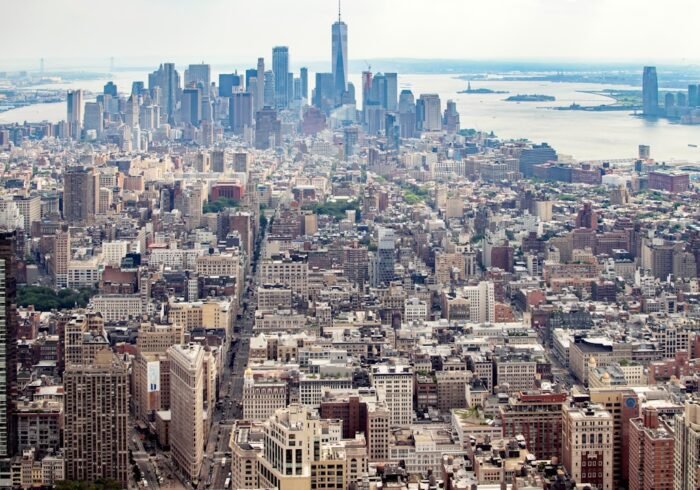The air we breathe is getting worse, filled with many pollutants. Air pollution is a big problem worldwide, hitting cities and countryside areas. This article will look into air pollution’s causes, health effects, and environmental damage.
Air pollution is everywhere, from smoggy cities to clean countryside. It’s important to know about air pollutants, where they come from, and how they harm us and the planet.
Key Takeaways
- Air pollution is a global issue that affects both urban and rural regions.
- Understanding the different types of air pollutants and their sources is crucial.
- Air pollution can have significant impacts on human health, from respiratory problems to cardiovascular issues.
- The environmental consequences of poor air quality include ecosystem damage and climate change acceleration.
- Monitoring and measuring air quality is essential for addressing the problem effectively.
Understanding AIR POLLUTION: Basic Concepts and Types
Air pollution is a big problem that includes many airborne contaminants. It’s important to learn about the basics and the types of air pollutants.
Primary Air Pollutants
Primary air pollutants are directly released into the air. They include particulate matter, ozone, nitrogen dioxide, sulfur dioxide, and carbon monoxide. These pollutants can harm air quality and human health right away.
Secondary Air Pollutants
Secondary air pollutants are made when substances in the air react with each other. This can happen because of sunlight, temperature, and other compounds. For example, ground-level ozone is made when nitrogen oxides and volatile organic compounds react.
Sources of Air Contamination
- Industrial emissions: Factories, power plants, and manufacturing facilities release pollutants like particulate matter, nitrogen oxides, and sulfur dioxide.
- Vehicle exhaust: Cars, trucks, and airplanes burn fossil fuels, releasing carbon monoxide, nitrogen dioxide, and particulate matter.
- Natural phenomena: Volcanic eruptions, wildfires, and dust storms also pollute the air with particulate matter and other contaminants.
Knowing where air pollutants come from is key to solving this environmental problem.
The Global Impact of Air Quality on Public Health
Poor air quality affects more than just local areas. It’s a major cause of death worldwide, leading to millions of early deaths each year. It harms our health in many ways, from breathing problems to heart issues.
The World Health Organization (WHO) says air pollution causes over 4 million deaths every year. The biggest impact is on developing countries, where clean air is scarce. Children, the elderly, and those with health issues are especially at risk.
Our lungs are hit hard by air pollutants, leading to more breathing diseases and deaths. Heart problems like heart attacks and strokes also increase with air pollution. The cost of these health problems is huge, with trillions of dollars lost in productivity and healthcare.
To tackle this big health problem, we need many solutions. We need better laws, new technologies, and teamwork from governments, businesses, and communities. Improving air quality is key to protecting people’s health everywhere.
Respiratory System Effects: From Irritation to Chronic Disease
Air pollution is a big threat to our lungs and airways. It affects people of all ages. It can cause short-term problems and even lead to serious diseases over time.
Short-term Respiratory Problems
Being around pollutants like ozone and nitrogen oxides can hurt your breathing right away. You might start coughing, wheezing, or feel tightness in your chest. Even healthy people can get these symptoms.
For those with asthma or bronchitis, air pollution can make things worse. It can make their breathing problems even harder to handle.
Long-term Respiratory Conditions
Long-term exposure to pollutants can lead to serious lung diseases. This includes COPD and lung cancer. These pollutants can damage the lungs, making it harder to breathe and increasing the risk of these diseases.
Vulnerable Population Groups
- Children: Their developing lungs and airways make them very vulnerable to air pollution. This can lead to long-term breathing problems.
- Elderly: Older adults, especially those with health issues, are more at risk from air pollution.
- Individuals with Compromised Immune Systems: People with weak immune systems, like those with chronic illnesses or cancer patients, are more likely to suffer from air pollution’s effects on the lungs.
It’s very important to protect our respiratory health from air pollution. This is especially true for those at higher risk. By improving air quality, we can prevent more respiratory diseases and ensure a healthier future for everyone.
Cardiovascular Health and Air Pollution Connection
Recent studies have found a scary link between air pollution and heart health. Exposure to harmful particles and gases can damage our hearts and blood vessels. This increases the risk of heart disease, stroke, and high blood pressure.
Research shows air pollution can start inflammation in our bodies. This inflammation can harm our blood vessels and lead to plaque buildup. This can block blood flow and raise the risk of heart attacks and strokes, even for those without heart problems.
| Cardiovascular Condition | Increased Risk with Air Pollution Exposure |
|---|---|
| Heart Disease | Up to 40% higher |
| Stroke | Nearly 30% higher |
| High Blood Pressure | Approximately 20% higher |
The elderly, people with heart issues, and those in polluted cities are at higher risk. Improving air quality can greatly protect heart health and lower disease rates.

“Air pollution is a major threat to cardiovascular health, and the scientific evidence continues to mount. Reducing exposure should be a public health priority.”
– Dr. Jane Doe, Cardiologist
Environmental Consequences of Poor Air Quality
Air pollution does more than harm human health. It also affects the balance of ecosystems and the environment. Issues like acid rain and ozone depletion show the devastating effects of poor air quality.
Impact on Ecosystems
Air pollution can upset the balance of ecosystems. Acid rain can make soil and water acidic, harming plants and fish. Eutrophication from too much nitrogen and phosphorus can cause algal blooms and kill marine life.
Climate Change Acceleration
Air pollutants like greenhouse gases and ozone depletion compounds speed up climate change. They trap heat, causing global temperatures to rise. This change affects ecosystems, farming, and the planet’s health.
Agricultural Effects
Poor air quality hurts farming. Crop yields drop because air pollutants harm plant growth. Ozone depletion, for example, lets in more harmful UV radiation, damaging crops.
It’s vital to tackle air pollution to protect our planet. We must ensure a sustainable future for all.
| Environmental Impact | Pollutant | Consequence |
|---|---|---|
| Ecosystem Disruption | Acid Rain | Acidification of soil and water bodies, harming aquatic life and plant growth |
| Climate Change | Greenhouse Gases, Ozone Depletion | Trapping of heat in the atmosphere, disruption of weather patterns |
| Agricultural Productivity | Ozone Depletion | Increased UV radiation, leading to reduced crop yields |
“The health of our environment is intimately linked to the quality of the air we breathe. Addressing air pollution is not just about protecting ourselves, but about preserving the delicate balance of our planet for generations to come.”
Indoor Air Pollution: Hidden Dangers at Home
While we often focus on the quality of outdoor air, the air inside our homes can pose significant health risks. Indoor air pollution, caused by various sources, can deeply affect our well-being. From VOCs (Volatile Organic Compounds) emitted by household chemicals to radon and secondhand smoke, dangers lurk within our living spaces.
Mold is a major culprit of indoor air pollution. It thrives in damp environments and can release spores that trigger allergic reactions and respiratory problems. Proper ventilation and regular maintenance are key to preventing mold buildup.
Household chemicals, like cleaning products, paints, and air fresheners, also contribute to indoor pollution. Choosing eco-friendly alternatives and ensuring good airflow can help reduce exposure to these harmful substances.
“Indoor air pollution is a silent killer, posing a serious threat to our health and well-being. Understanding the sources and taking proactive steps to improve indoor air quality is crucial for safeguarding our homes and families.”
To address indoor air pollution, we need a multi-faceted approach. Proper ventilation, air purifiers, and eliminating pollutant sources can all help. By taking these steps, we can protect ourselves and our loved ones from the hidden dangers in our homes.

Monitoring and Measuring Air Quality Index
It’s key to watch air quality to know how bad pollution is and its health risks. The Air Quality Index (AQI) helps by giving a standard way to share air quality levels. This makes it easier for everyone to understand.
Understanding AQI Readings
The AQI ranges from 0 to 500. Higher numbers mean worse air quality. It looks at PM2.5 and ozone levels. It then rates air quality from good to hazardous.
Air Quality Monitoring Tools
- Stationary air quality monitoring stations: These sites give accurate pollution data. But, they’re few and cover less area.
- Air quality apps: Apps on phones offer real-time air quality info. They use pollution sensors and user reports.
- Personal air quality monitors: Small, portable devices. They let people check PM2.5 and other pollutants nearby.
Health Advisory Levels
The AQI links to health advice. It tells people how to avoid pollution. For example, when air is unhealthy, it’s best to stay inside or wear masks.
“Monitoring air quality is essential for understanding the severity of air pollution and its potential impact on public health.”
Practical Steps to Reduce Exposure
We can all do things to cut down on air pollution and keep ourselves healthy. By using smart strategies, we can make our surroundings cleaner and healthier. This is true for both inside and outside our homes.
Invest in Air Purifiers
Putting air purifiers in our homes and offices can really help clean the air. These devices get rid of harmful particles, allergens, and pollutants. This makes the air we breathe cleaner and fresher.
Wear Protective Masks
When we go out, especially in polluted areas, wearing masks is a good idea. Masks filter out harmful particles and gases. Make sure to pick masks that are certified to protect you well.
Enhance Home Ventilation
Good ventilation is key for healthy indoor air. Make sure your home gets enough air by opening windows, using fans, and thinking about mechanical systems. These help air move and get filtered.
Plan Commuting Strategies
Our daily commuting choices matter too. Try using public transport, carpooling, or biking or walking. These options cut down on pollution and our carbon footprint.
Seek Refuge in Green Spaces
Spending time in green spaces like parks can be a break from pollution. These areas offer cleaner air and help our mental and physical health. They help us feel refreshed and renewed.
By following these steps, we can control our exposure to air pollution. This helps improve air quality, protecting our health and the environment we live in.
Conclusion
Air pollution is a big problem for our health and the planet. It causes breathing issues and heart problems. But, we can make a change.
We can work together to have cleaner air and a healthier world. Governments, groups, and people are already making a difference. They’re setting new rules, using green energy, and pushing for better transport.
But we all have to do our part. We can lower our carbon footprint and support green policies. By using less energy and choosing cleaner options, we help make the air better. Together, we can create a better future for everyone.



